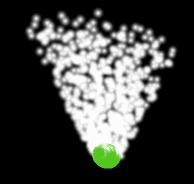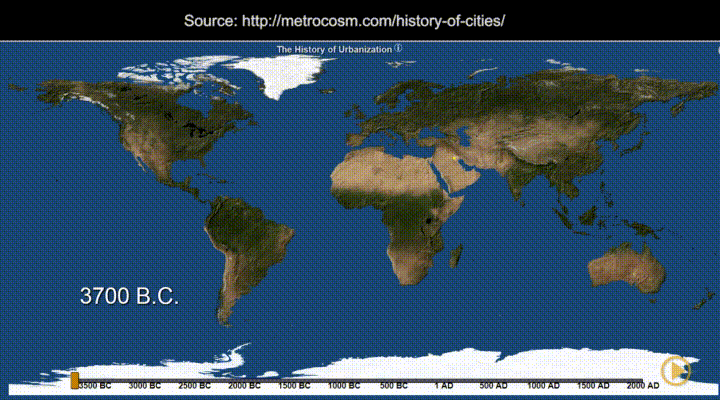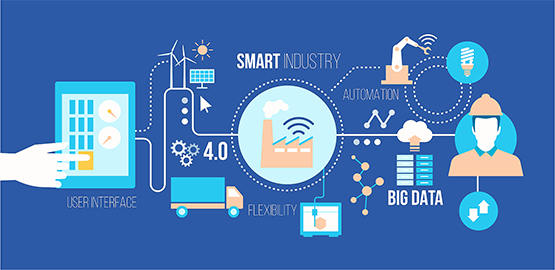History of Agglomeration
When discussing an agglomeration between companies, we think it will help to understand what the history of the word is. Below follows a brief summary of it:
Agglomeration 1.0
Physical Agglomeration

Agglomeration of Particles
Agglomeration means here the formation of new and different objects out of at least two primary objects. It is one of the most used particle formation processes in food, feed, pharmaceuticals and fine chemicals. Agglomerates form by various mechanisms and systems:
- electrostatic forces between very small (nanoscale) particles,
- the formation of bridges between particles, sprayed with a liquid that then evaporates,
- by thermal effects, like smelting or glass sintering.
There is agglomeration technology that is capable of producing granules by the accurate introduction of powders and liquid solutions into a specially designed mixing chamber. Low to medium density agglomerates with good dispersibility are then produced.
Sonic agglomeration of aerosols is a process that involves the response of particles suspended in gaseous media to forces arising from an intense sound field, resulting in particle collision and particle agglomeration.
Its main practical application is industrial air & gas cleaning. Especially the filtration methods that remove sub-micron particles, by increasing their size so that they can be readily collected by electrical, electrostatic, or other methods.

Agglomeration of People
There are 2 main reasons for the continually-growing agglomeration of various groups of people, since 3500 B.C.:
- the city-state (polis) as a center for the production of goods & services for its citi-zens,
- the city-state as a public good, such as walls for physical safety, temples for spiritual safety and healing, and market places for socializing, poli-tics, trade, etc.
Urban agglomeration can support a higher agglomeration of profit. For every good or service, the urban economy can support a lower price and a higher demand than those attained in a dispersed state. Cities form and grow to exploit economies of agglomeration.
Economies of agglomeration are cost savings and net income boosting, arising from:
- Urban agglomeration, an aspect of urban economics. This concept relates to the idea of economies of scale and network effects.
- Company agglomeration. As more firms in related fields of business physically cluster together, their costs decline significantly and their net income will boost, because of division of work and workers.
- Specific Purpose agglomeration: Bottom line boosts for smaller companies forming Co-ops are price-control, cost-reduction, and cost-sharing. These Co-ops have been existing and cover all of the P&L and Balance Sheet items, except for Net Goodwill: the difference between an enterprise's book and market value.

Agglomeration 2.0
Virtual Agglomeration
We, together with our Associates, are leading the effort to significantly increase the value of this intangible Goodwill Asset, by reinventing the way smaller businesses can use the capital markets, by scaling up through a process called Agglomeration 2.0. This umbrella model allows debt-free, profitable, and well-run companies to come together as a cooperative, whilst leaving the founders in operational control of their own business.
This virtual clustering of similar-sector businesses can have advantages, because a virtual co-op usually attracts more suppliers and customers than a single business could achieve by itself.
The Organisation for Economic Co-operation and Development (OECD) states that globally, smaller enterprises make up more than 50% of total GDP and over 80% of private sector employment in most countries, yet the risky and illiquid nature of smaller companies make them unattractive to smart investors.
However, through share-swap acquisitions we bring these smaller entrepreneurs together under one Holding Company umbrella, and thereby make those enterprises who create most of the value in this world a very attractive short & long term stock for the smaller private equity investors.

Agglomeration 3.0
Financial Agglomeration
Using the 2.0 model, substantial shareholder value increase over time can be created through teaching Financial Literacy, and implementation and global-umbrella-integration of PCI’s wide range of Financial Management Tools.
With this we shape our own Global 4IR Architecture, to be used for Intranet Platforms-based Big data-accumulation, data-exchange, and data-management, as well as various financial technologies, blockchain transactions, and learning.

Centralized system vs Blockchain system
Agglomeration 4.0:
Human Capital Agglomeration
A Unique System of Infinite Earnings Improvement
Besides using the benefits of the 3.0 model, further significant shareholder value increase over time can be created through the introduction, implementation, and company-integration of PCI’s wide range of Human Capital Growth tools, allowing humans to become significant "Smart Idea Generators".
This is accomplished through the use of Production Platforms, where Agglomeration 2.0 umbrella members agglomerate, and then produce ideas and exchange experiences amongst like-minded and/or common interest staff of our co-op companies. As a result they learn from each other at an accelerated, exponential pace.
All of 4IR, cyber-physical systems, are materially measurable. Our Human Capital Growth Tools also include Information and Tools that draw their power from the quantum field. We therefore call this harmonizing toolkit Quantum Conditioning.

Smart Idea Generators informing Smart Investors




